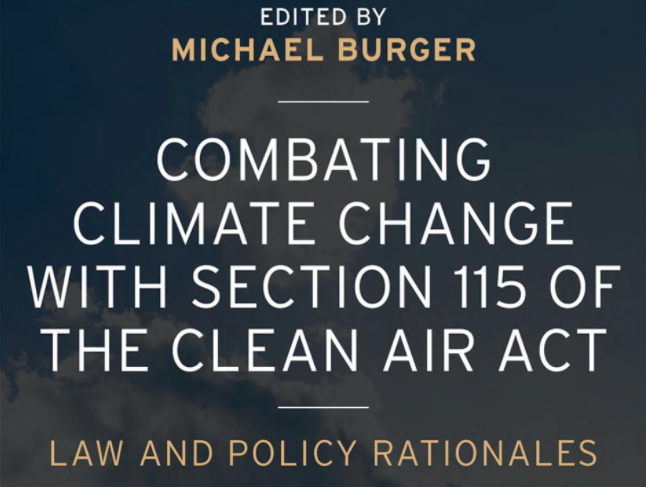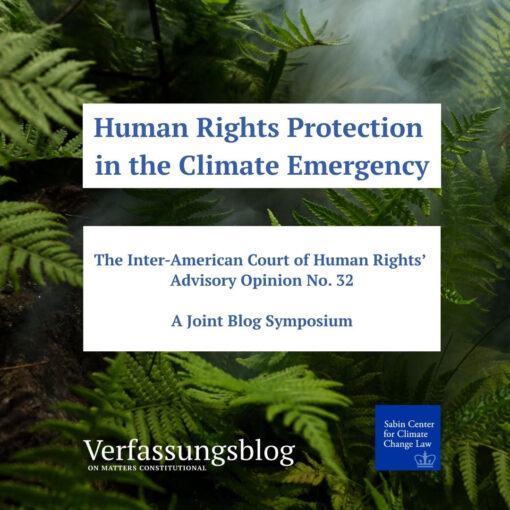By Michael B. Gerrard, Director
The 44th Pacific Islands Forum has convened in Majuro, Republic of the Marshall Islands (RMI). The theme of the conference is “Marshalling the Pacific Response to the Climate Challenge.” Three of the four island nations most endangered by climate change are represented – RMI, Tuvalu, and Kiribati. (The fourth, Maldives, is in the Indian Ocean.)
I had the honor of being invited to participate in the Panel of Experts on Climate Leadership that convened on September 2, the day before the formal opening of the conference. It was chaired by Senator Tony de Brum, Minister-in-Assistance to the President of RMI, who spoke at Columbia Law School several months ago. The forum took place in the Island Convention Center around a large hollow table, with replicas of two traditional Marshallese outrigger canoes in the center. Several hundred people attended, including a number of local school groups. The session was viewed on video throughout the outer islands of RMI.
I had been asked to address the question: “Are there any legal approaches or strategies that can help address these security threats [posed by sea level rise], in particular forced relocation and permanent loss of territory and associated sovereign rights?” I started by saying that the fact that these questions even have to be asked is a great tragedy, and shows the urgency of international action, as well as domestic action by the major emitting states, the two largest of which (in terms of greenhouse gas emissions) are China and the United States. I also said that it would be unprecedented in human history for a state to disappear because of physical events, as opposed to military events.
I based my legal analysis on chapters contained in Threatened Island Nations: Legal Implications of Rising Seas and a Changing Climate, a book that Gregory Wannier and I edited, published by Cambridge University Press in 2013. . . .
The book grew out of a conference of that title that Columbia University and RMI co-sponsored at Columbia Law School in May 2011. As I explained, customary international law has four objective criteria for statehood: the state must possess a defined territory; it must have a permanent population; it must have a government; and it must have a certain measure of independence. For a state to continue to have sufficient territory to meet the first criterion, even a small land area protected by a sea wall, or elevated by fill, would probably be sufficient. A platform on stilts would be less certain. A population nucleus of about fifty people living permanently on this land would probably satisfy the second criterion. A government in exile would satisfy the third, and the independence criterion would probably not be in question.
There are legal theories that the extinction of a low-lying island state due to anthropogenic climate change would be a serious violation of the peremptory norms of general international law, so, even if a state did not meet all four criteria, its continued existence might be recognized. Fortunately, it does not appear that any state is likely to be completely submerged during this century, so there is no rush in resolving this question.
Sooner attention, however, is warranted for the question of the boundaries of a state. The Exclusive Economic Zone (EEZ) defines the area in which a state has the right to charge a fee for fishing, and thus it has considerable financial importance to island nations. The lines of the EEZ are typically drawn out from the coastline, so if the coastline shrinks so does the EEZ. Under the United Nations Convention on the Law of the Sea, states can prepare surveys and declare the outer boundaries of their territories, and maritime zones would be measured from that. RMI is now preparing and plans to file the geographic coordinates of its coastal baselines, and the outer limits of the zones that extend from them, so that these lines can be fixed and, it is expected, would still be respected by international law even if sea level rise alters the coastlines in the coming decades.
With respect to population relocation, I explained that there are currently no binding international agreements on climate-induced migration. The closest is the African Union Convention for the Protection and Assistance of Internally Displaced Persons in Africa (the Kampala convention), which includes the obligation to “take measures to protect and assist persons who have been internally displaced due to natural or human made disasters, including climate change.” Finland and Sweden are currently the only countries with immigration laws that directly address people who are unable to return to their home country due to environmental disasters.
Section 14(f) of the Cancun Agreements of 2010 from the United Nations Convention on Climate Change (UNFCCC) “invites all parties” to undertake “measures to enhance understanding, coordination and cooperation with regard to climate induced displacement, migration and planned relocation, where appropriate, at the national, regional and international levels.” This was the first mention of displacement and migration in one of the formal decisions from the UNFCCC. Its placement is significant because it is contained in a list of the kinds of activities that are considered to be “adaptive” and that might therefore be eligible for funding under the emerging climate funding regime.
A number of bilateral and multilateral agreements do allow for relocation, though none are explicitly about climate change. The U.S. has a Compact of Free Association with RMI and the Federated States of Micronesia, and another with Palau, that allows residents of those countries freely to enter the U.S. and work there indefinitely. New Zealand has similar compacts with the Cook Islands and several other locations. Many people have migrated under these agreements.
Several draft treaties and international agreements have been proposed but not adopted. One is the Nansen Principles, initiated by the governments of Switzerland and Norway and financed by the European Commission, which concerns cross-border displacement. Another is the Climate Displacement Law Initiative’s Peninsula Principles on Climate Displacement.
I concluded my remarks on the panel by saying that the day will come – hopefully many decades in the future, but possibly earlier – when the world community will be faced with massive numbers of people seeking new homes as a result of climate change. The numbers of people in the small island nations is small on the global scale. The much greater challenge will arise if and when massive displacement occurs in highly populous states such as Bangladesh. It is not too soon for discussions to begin about what countries will take in what portion of the world’s climate-displaced people. Countries such as the U.S., Canada, Australia, and Russia all have high per capita greenhouse gas emissions, and large land masses, and thus there are arguments that it would be only fair for them each to take in many people. (China also has high emissions in absolute numbers, though on a per capita basis they are still fairly low. However, China also has a long, highly populated, vulnerable coastline, so it would most likely have its hands full handling its internally displaced people.) None of these countries – or any other – has any interest whatsoever in taking in large numbers of climate-displaced people, but that is not a reason to avoid beginning the discussion.




